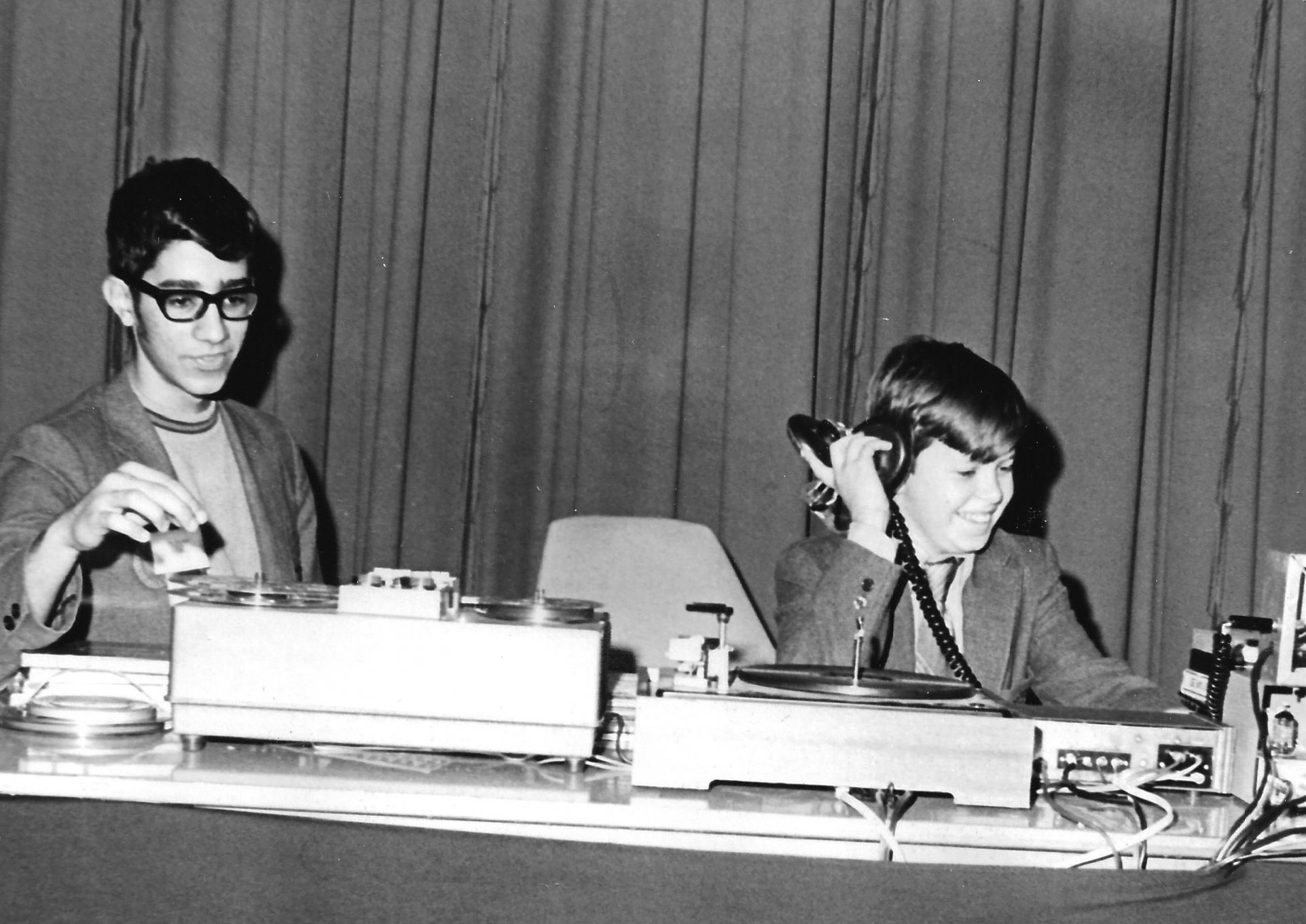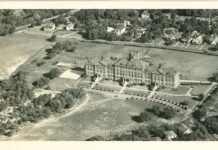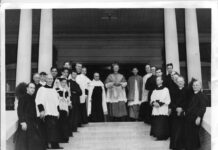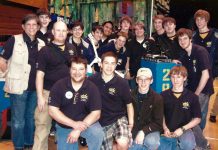
WJHS-TV, a closed circuit system, began in 1963 with the opening of the Inwood Rd. campus. A Prospectus for the senior English TV course explains the expectations for classroom appearance, discussion protocol, assignments, and more.
In September 1964 Fr. Robert Tynan, S.J. corresponded with Fairchild Camera and Instrument Corp. concerning problems with the system. He wrote that the system had “received national publicity in professional trade journals [and] the operators of the equipment are subject to frequent invitations to speak at large educational gatherings.”
The North American Secretariat for Communications (NASCOM) and the Jesuit Educational Association met October 30 and 31, 1965 at Georgetown University, Washington, D. C. The agenda was to discuss the use of television and other communications in the schools, especially the Educational Television Committee (JEA-ETV) and ITV/CCTV in Jesuit schools.

A statement addressed the pros and cons of how televised courses would affect the professor, the students, and the classroom. In addition, class regulations were offered such as how to open the class, what the desk should look like, how a question should be asked, etc. The regulations end with the statement: “In general, the TV course at Jesuit represents the strenuous efforts of the administration of your school to bring the latest developments in technology and pedagogy to your ready disposal. The above suggestions and norms will be a positive step toward guaranteeing the success of your course.”
Under supervision of moderator Fr. William E. Underhill, S. J., the 1966-1967 school year planned to have “announcements every Monday and Friday morning, some class teaching, the Jesuit Speech Tournament, and possibly the televising of the Texas Conference of Student Councils to be held at Jesuit soon” (The Roundup September 1966).
The Roundup, November 1967, talks about a daily broadcast and laments the problems for the new year: “a relatively inexperienced crew,” the loss of the previous year’s director Tony Tinkle, a small room “crammed [with] two cameras, lighting and sound equipment, in addition to the announcers, and the men behind the cameras.” Lank Smith became the new director.
“Plans for the future include: more frequent interviews with school personalities, editorials by any student wishing to write one and films forecasting special activities.”
The 1969 Roundup reports the station is in its fifth year of broadcast, suggesting a later start date than the 1966 Roundup. However, the correspondence noted above in September 1964 between Fr. Robert Tynan, S. J. and others regarding problems with the system clearly indicate that the TV program began in 1963-1964.
The 1969 Roundup article reports the “crew has been expanded from it’s [sic] original crew of three cameramen, to one of almost thirty people including writers, reporters, announcers, cameramen, scenery people, and even an editorial board, all under the direction of Tommy Gondolf, and the watchful eye of Mr. George Griener S. J. moderator. The purpose of this large crew is to add a touch of professionalism to the station’s undertakings.”

In addition, the program coordinator, Beau Hill, and head writer Chris Cigmalia, plan “to combine ‘Student interest’ features with the regular announcements to form more interesting shows. Also, several ‘Specials’ are in the planning stage at the time of this writing.”
It is not clear when the television system was disbanded, but it continued until the late 1970s and was gone by the 1979-1980 school year.




